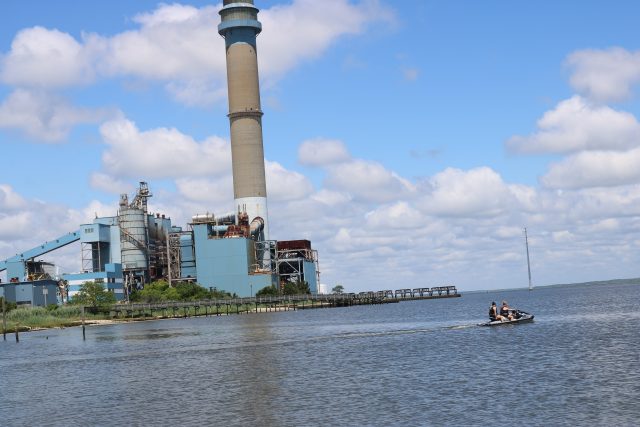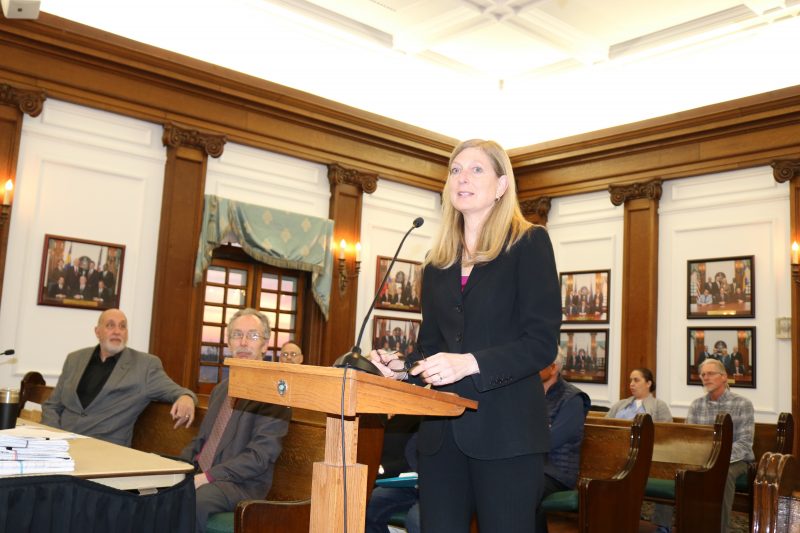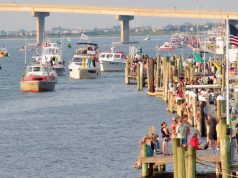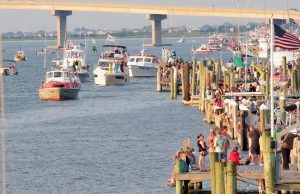
By DONALD WITTKOWSKI
Ocean City intensified its fight against a proposed ocean wind energy farm by criticizing plans by the project’s developer to build an underground transmission line that would come ashore at the beach and run through town.
During an online hearing Friday held by the state Board of Public Utilities, the city’s lead attorney accused Ocean Wind LLC of proposing a route for the transmission line at 35th Street simply because it would be the least expensive option for the company.
“It appears that Ocean Wind is promoting the most economically expedient route. This is a self-serving approach at the cost of Ocean City,” City Solicitor Dorothy McCrosson said.
On Feb. 2, Ocean Wind filed a petition with the BPU to install the transmission line through Ocean City to connect the offshore wind turbines to a substation next to the decommissioned B.L. England Generating Station in Upper Township.
Orsted, the Danish energy company overseeing the wind farm, plans to run a transmission line under the seabed and bring the electricity onshore through the cable at the beach lots of 35th Street. Orsted has not publicly disclosed how much the transmission line would cost.
The underground cable would travel west to Bay Avenue, north on Bay Avenue to Roosevelt Boulevard, west across Peck Bay at Roosevelt Boulevard Bridge and then continue on to Route 9 to property near the former B.L. England Generating Station, according to Orsted’s petition.
Ocean City officials have been among the most ardent opponents of the wind farm project, fearing that it would harm tourism, real estate values, the commercial fishing industry, migratory birds and marine life. They are also worried that the gigantic wind turbines that would pass by Ocean City 15 miles offshore would create a visual blight when viewed from land.
(Video of state Board of Public Utilities hearing on offshore wind project).
Heightening the battle with Orsted, McCrosson argued during the BPU hearing that the transmission line would disturb environmentally sensitive areas of Ocean City’s beachfront and wetlands. Ocean City officials want Ocean Wind to instead run the transmission line through what they believe would be a less harmful route that would take it across the Great Egg Harbor Inlet.
“The failure of Ocean Wind to even consider the opinion of the elected officials of Ocean City, the affected community, as to the preferred route should be startling to this board when Ocean Wind has other options,” McCrosson told the BPU commissioners.
Ocean Wind’s attorney, Gregory Eisenstark, repeatedly stressed that the company believes the proposed route along 35th Street would be the best option for running the transmission line through Ocean City and would have only a minimal impact on local residents.
“All of the portions within Ocean City will be underground,” Eisenstark said. “Once construction is completed, the lines won’t be visible – you won’t see them, you won’t hear them. You really won’t know that they’re there.”
In response to Ocean City’s proposal to run the transmission line through Great Egg Harbor Inlet, Eisenstark said that plan would be fraught with environmental and construction challenges and would also interfere with boating traffic in the waterway.
The BPU is considering Ocean Wind’s petition to approve the transmission line along the 35th Street route based on whether the plan is “reasonably necessary” for the construction of the offshore wind farm. A decision will be made later, but the BPU did not announce a date.
“The board takes this responsibility very seriously and is committed to providing a fair and transparent process,” BPU President Joseph Fiordaliso said during the nearly 90-minute hearing Friday.

McCrosson argued that the BPU lacks the authority to make a decision on the transmission line and said the dispute should instead be referred to New Jersey’s Office of Administrative Law.
“The city respectfully questions the authority of the BPU to consider Ocean Wind’s petition seeking authority to obtain an easement over the city’s fragile beach and wetlands and its environmental permit consents,” she said.
The wind farm is currently in the planning and permitting phase and is scheduled for completion by 2024. It would run offshore from Atlantic City to Stone Harbor, passing by Ocean City in the process. Orsted is planning to build an 1,100-megawatt project that would create thousands of construction jobs and power over 500,000 homes.
Orsted and Ocean City officials have been negotiating on and off for the past three years over the wind farm, but have been unable to reach a settlement.
“Unfortunately, the parties have not been able to reach an agreement, and that’s why we’re here today,” Eisenstark said.
Last August, Ocean Wind submitted a formal, written request to Ocean City seeking local approvals for the project. However, they were unable to obtain the required easements, consents and associated actions from Ocean City, according to Orsted.
Gov. Phil Murphy signed a bill into law last year allowing for offshore wind farm projects to receive their regulatory approvals without having to go through local municipalities for their consent.
The result has generated anger from some local officials in Ocean City and other towns. Members of City Council have repeatedly complained that the bill stripped Ocean City of its right to “home rule.”
McCrosson raised strong objections to the state bill, denouncing it as “hastily adopted” legislation that broadly purports to supersede all other laws, rules and regulations.
“It strips elected municipal officials of the power to decide whether Ocean Wind, a private corporation, may take municipal property rights within Ocean City in complete disregard of the will of the governing body and its constituents,” McCrosson said.

In rebuttal, Eisenstark asserted that Ocean City was trying to inject a series of issues into the hearing at the last minute and that most of McCrosson’s “feigned objections” to the Ocean Wind project should be stricken from the record. He said Ocean Wind plans to file a formal objection with the BPU to McCrosson’s statement.
“They had the ability to raise these issues months ago. They failed to do so and they shouldn’t be given the opportunity to prolong this proceeding because of their own inaction,” Eisenstark said of Ocean City.
McCrosson responded that her objections simply expanded on concerns that were previously raised by Ocean City about the project. She also said some of the city’s concerns were based on the conclusions of a 1,400-page environmental impact study of the wind farm that was released this week by the federal Bureau of Ocean Energy Management.
“BOEM will review this Draft Environmental Impact Statement and consider public feedback as they work to make a final decision on the fate of the project by April 2023. Whether you’re for it, against it, or not sure, it’s worth looking at this report to learn more,” Mayor Jay Gillian said in a statement Friday urging Ocean City residents to read the study.
More information on how to view the BOEM document and to comment is available here.





